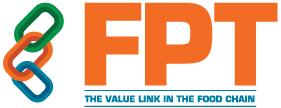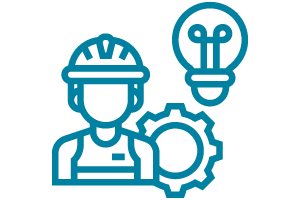Powder Soap Production Line
Dry detergent components are initially put into a huge machine known as an agglomerator in this Powder soap production line process. Powder soap is a type of laundry detergent that uses a synthetic surfactant instead of the metal fatty acid salts found in soap. These powdered soaps are also available as laundry powders, hard surface cleaners, and so on. The majority of powder detergents have soap in their component list, however, they primarily work as a foam depressant rather than a surfactant.
Powder soap is often created utilizing a batch or continuous soap-making method. Surfactants, optical brighteners, chelating agents, detergent builders, fabric softeners, enzymes, and other ingredients are commonly used in their formulation.
Powder soap is one of the most popular commodities among a wide range of people. As a result, the idea of establishing a specialized powder soap production line is to produce it in high quality on a highly qualified issuing line, feeding local markets and maybe adjacent markets. Powder soap nowadays is made out of a light, free-flowing, puffed substance.
Spray drying, as compared to dry mixing and agglomeration methods, produces a better result. The mass-produced in this manner is light, virtually completely dehydrated, and has a low danger of caking in the finished product.
Process Of Powder Soap Production Line
Although there are three techniques to make Powder soap in a Powder soap production line, only two of them are now in use. The components are blended in huge vats before being packed in the blender method, which is preferred by smaller businesses.
The devices are massive: A typical blender can store 4,000 pounds of combined material, but blenders may handle weights ranging from 500 to 10,000 pounds. These are tiny quantities, according to industry requirements, for which the blender technique is perfect. While there may be some settling, the final detergent is of good quality and may compete with detergents manufactured using other methods.
The agglomeration process is the second most frequent technique of powder soap manufacture. Surfactants, optical brighteners, fabric softeners, enzymes, detergent builders, bleaches and compounds, synthetic perfumes and scents, and other components are often employed in the Powder soap production process.
Unlike the blender process, the Powder Soap Production Line is continuous, which is why big powder soap makers like it. Between 15,000 and 50,000 pounds of powder soap may be produced per hour using the agglomeration technique.
Dry components are combined in water before being dried with hot air in the third phase of the Powder soap production line. Despite the great quality of the end product, the expensive expense of fuel and engineering issues related to venting, warming, and recycling the air have led to agglomeration being mainly supplanted by this process.
The blender process
Ingredients are first put into one of two machines in the Powder soap production line a tumble blender or a ribbon blender. A machine turns and shakes the tumbling blender, which is fashioned like a rectangular box, while the ribbon blender is a cylinder equipped with blades to scrape and combine the components.
A gateway at the bottom of the bowl is opened when the components within the blender have been combined. The mix is allowed to stream out onto a conveyor belt or other channelling device while the blender is still stirring the contents. The detergent is then transported to another portion of the facility, where it is placed in boxes or cartons for distribution to wholesalers or distributors.
The agglomeration process
Sharp, rotating blades in the agglomerator blend the material to a fine consistency, similar to how food gets textured in a food processor. Liquid components are sprayed on the dry mix through nozzles built into the agglomerator's walls after the dry ingredients have been mixed.
The blending process continues, resulting in an exothermic (heat-generating) reaction. The final combination is a heated, thick liquid that resembles soft gelatin. The liquid is then permitted to exit the agglomerator.
The slurry technique
Ingredients are dissolved in water to generate a slurry in this powder soap production line process. The slurry is blasted through nozzles inside the top of a cone-shaped container using a pump, while hot, dry air is pumped into the bottom of the cone at the same time. Dry detergent "beads" fall to the bottom of the cone as the slurry dries, where they may be collected for packing.
Liquid Powder soap
If the detergent is to be liquid rather than powder, it is simply re-mixed with a solution of water and different compounds known as solubilizers after all other components have been blended. The solubilizers aid in the complete and equal mixing of the water and detergent.
Market for Powder soap production line
Due to the simple production process, starting a Powder soap Production line or synthetic washing powder business is one of the most viable business alternatives. The powder soap industry is a section of the global FMCG market with a lot of room for expansion. Because it is a consumer commodity, people use it regularly for clothes, hand soap, and cooking utensils, and it is in high demand throughout the year.
People have increased requirements for washing clean exquisite quality, does not harm the hand, is simple to clean, and has decontamination capabilities, these are now the customers to the low demand for detergent, and despite this, the powder soap market is quite large.
The drum is the most important piece of equipment in a powder soap production line, and many producers choose a basic mixer since the craft is easy and the processing is low-cost. By advertising to attract consumers, shoppers are drawn to low prices. Some manufacturers may install a basic upper mixer, equipment located at the bottom of the so-called mulser, but the equipment at the bottom of the sealing ring will seep water after a long period, posing a major safety hazard when electrical short circuits occur.
Because of their inadequate equipment material, they use it for less than a few months before it rusts, and they use the supermarket on the market to purchase back the little basic water filters that are assembled to the device as water treatment equipment for a few hundred dollars.
The powder soap production line is driven by people's rapidly changing lifestyles and worldwide modernization. Chemical, paint, textile, paper, and car industries are important factors and demand drivers for industrial detergents. Increased demand for apparel, hotels, and end-users is a primary driver for detergent market growth, thanks to the rising population and rising disposable income of consumers. Government laws, norms, regulations, environmental reforms, and CSRs, on the other hand, are some of the restrictions on the detergent market's growth.
Our principal
Kiron Food Processing Technologies India in association with Floveyor provides a complete solution for your Powder soap production line needs. Floveyor believes in making material handling as simple as possible. They excel in providing simple and comprehensive conveying solutions that eliminate the difficulties and problems associated with plant engineering.











